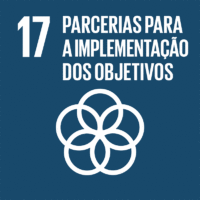Ciência_Iscte
Publicações
Descrição Detalhada da Publicação
Plasmodium falciparum genetic diversity in continental Equatorial Guinea before and after introduction of artemisinin based combination therapy
Título Revista
Antimicrobial Agents and Chemotherapy
Ano (publicação definitiva)
2017
Língua
Inglês
País
Estados Unidos da América
Mais Informação
Web of Science®
Scopus
Google Scholar
Esta publicação não está indexada no Overton
Abstract/Resumo
Efforts to control malaria may affect malaria parasite genetic variability and drug resistance, the latter of which is associated with genetic events that promote mechanisms to escape drug action. The worldwide spread of drug resistance has been a major obstacle to controlling Plasmodium falciparum malaria, and thus the study of the origin and spread of associated mutations may provide some insights into the prevention of its emergence. This study reports an analysis of P. falciparum genetic diversity, focusing on antimalarial resistance-associated molecular markers in two socioeconomically different villages in mainland Equatorial Guinea. The present study took place 8 years after a previous one, allowing the analysis of results before and after the introduction of an artemisinin-based combination therapy (ACT), i.e., artesunate plus amodiaquine. Genetic diversity was assessed by analysis of the Pfmsp2 gene and neutral microsatellite loci. Pfdhps and Pfdhfr alleles associated with sulfadoxine-pyrimethamine (SP) resistance and flanking microsatellite loci were investigated, and the prevalences of drug resistance-associated point mutations of the Pfcrt, Pfmdr1, Pfdhfr, and Pfdhps genes were estimated. Further, to monitor the use of ACT, we provide the baseline prevalences of K13 propeller mutations and Pfmdr1 copy numbers. After 8 years, noticeable differences occurred in the distribution of genotypes conferring resistance to chloroquine and SP, and the spread of mutated genotypes differed according to the setting. Regarding artemisinin resistance, although mutations reported as being linked to artemisinin resistance were not present at the time, several single nucleotide polymorphisms (SNPs) were observed in the K13 gene, suggesting that closer monitoring should be maintained to prevent the possible spread of artemisinin resistance in Africa.
Agradecimentos/Acknowledgements
--
Palavras-chave
ACT introduction,drug resistance molecular markers,Equatorial Guinea,genetic diversity,malaria,neutral and flanking microsatellites,Plasmodium falciparum,Pfcrt,Pfdhps,Pfdhfr,Pfmdr1,Kelch propeller protein K13 polymorphisms
Classificação Fields of Science and Technology
- Ciências Químicas - Ciências Naturais
- Ciências Biológicas - Ciências Naturais
- Ciências da Saúde - Ciências Médicas
- Outras Ciências Médicas - Ciências Médicas
Contribuições para os Objetivos do Desenvolvimento Sustentável das Nações Unidas
Com o objetivo de aumentar a investigação direcionada para o cumprimento dos Objetivos do Desenvolvimento Sustentável para 2030 das Nações Unidas, é disponibilizada no Ciência_Iscte a possibilidade de associação, quando aplicável, dos artigos científicos aos Objetivos do Desenvolvimento Sustentável. Estes são os Objetivos do Desenvolvimento Sustentável identificados pelo(s) autor(es) para esta publicação. Para uma informação detalhada dos Objetivos do Desenvolvimento Sustentável, clique aqui.

 English
English



